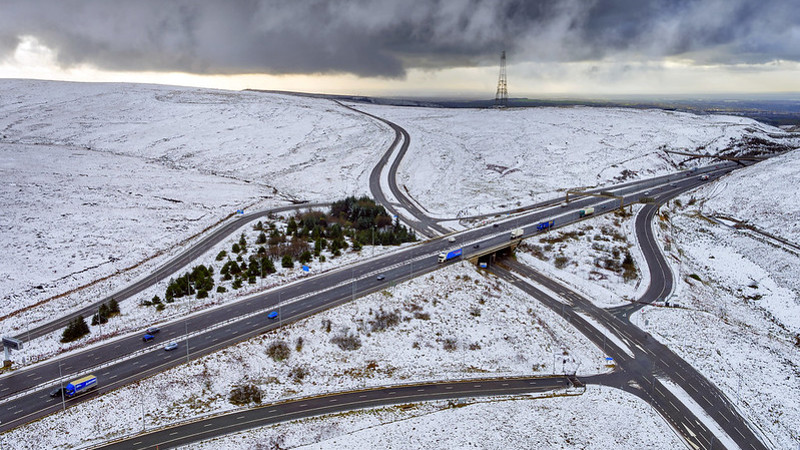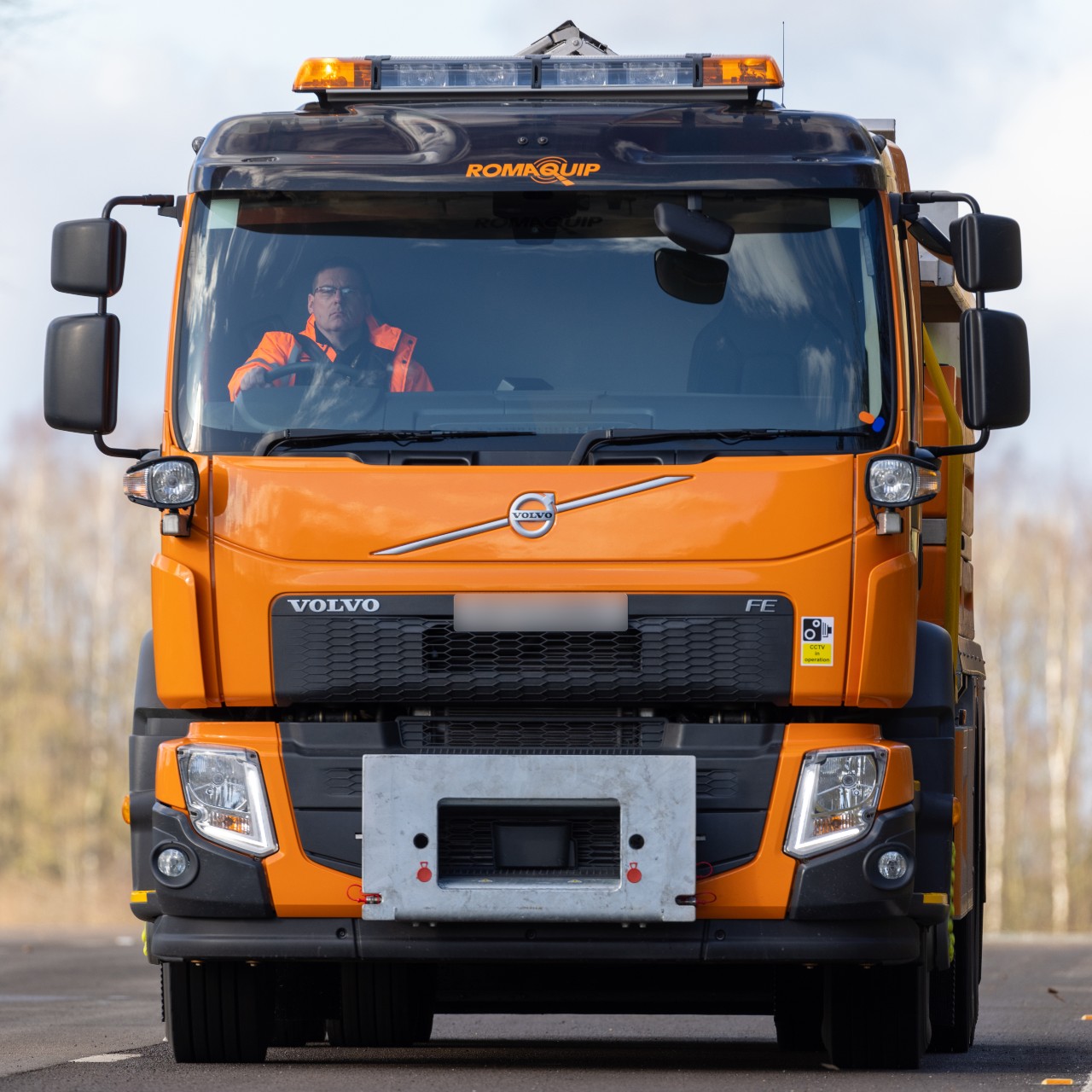Travelling in snow and ice
Find out how to make your journeys as smooth and safe as possible when the temperatures drop.

Before you travel
To ensure your travel plans go without a hitch, it’s important to plan your journey in advance, particularly if you’re travelling on routes you’re not familiar with.
- Plan your route
- Check the availability of service areas along your route
- Make sure you know how to operate your headlights and fog lights
- Check your vehicle
- Pack a winter kit
- Check the weather forecast. If snow or ice is expected, consider delaying your journey until it clears.
- Check traffic conditions on our website and on Twitter
Pack a winter kit
It's worth carrying essential winter supplies just in case you need them, especially if there's a forecast for severe weather:
- Water
- De-icer
- Food
- Warm clothes
- Ice scraper
- Fully charged mobile and car charger
- Torch
- Blankets
- Boots
- Snow shovel
- Sunglasses to cope with the low winter sun
When you're on the road
During severe winter weather, when there may be snow and ice around, please follow this advice:
- Stick to the main roads where you can and only travel if necessary.
- Slow down - it can take 10 times longer to stop in icy conditions.
- Use a high gear - this will help avoid wheel spin.
- Accelerate gently, using low revs. You may need to take off in second gear to avoid skidding.
- You may need up to 10 times the normal gap between your car and the car in front.
- Try not to brake suddenly – it may lock up your wheels and you could skid further.
- Be extra cautious at road junctions where road markings may not be visible.
The Highway Code provides more information about driving in adverse weather conditions.
How we help you
Our traffic officers and control room teams work throughout the year to help keep people moving safely. This is particularly important during periods of cold weather.
Find out about how we help you on our roads in winter.
What if I break down?
If your vehicle has a problem, or you get into trouble on a motorway, stay calm and try to exit at the next junction or motorway service area.
Find more advice on what to do if you break down.
Top tips for winter driving
When the gritters are out
On motorways our gritters will usually be salting from the middle lanes, at speeds up to 50mph, but you may also find them salting in any lane when necessary. Where possible message signs will inform you that salt spreading or snowploughing is taking place.
During snow, our gritters will be out on the roads with their snowploughs fitted, and when clearing snow may be found travelling in any lane at speeds between 5 and 40mph.
Please help us to help you by giving them time and space to do their job. In particular:
- Never tailgate – always leave a sensible distance between you and the gritter
- Pass carefully – only when it’s safe to do so
- Don’t use a hard shoulder – unless it's open for use as indicated by the overhead signs
- Don’t undertake – our gritters need to change lanes at junctions
- Reduce your speed and adapt your driving when conditions are severe
Keep your distance
You may need up to 10 times the normal gap between your car and the car in front.
Take extra care in freezing rain
In freezing rain, keep your distance and reduce speed – black ice is difficult to see, so even when conditions seem normal, it can be slippery, leading to very dangerous driving conditions.
Go easy on the accelerator
Accelerate gently, using low revs. You may need to take off in second gear to avoid skidding.
Watch out for the gritters
Look out for gritters spreading salt or using snow ploughs, and only overtake if it's safe to do so.

